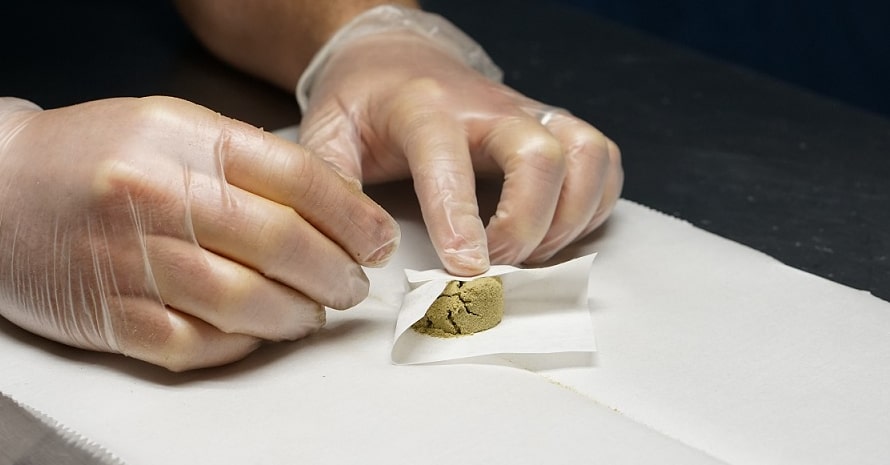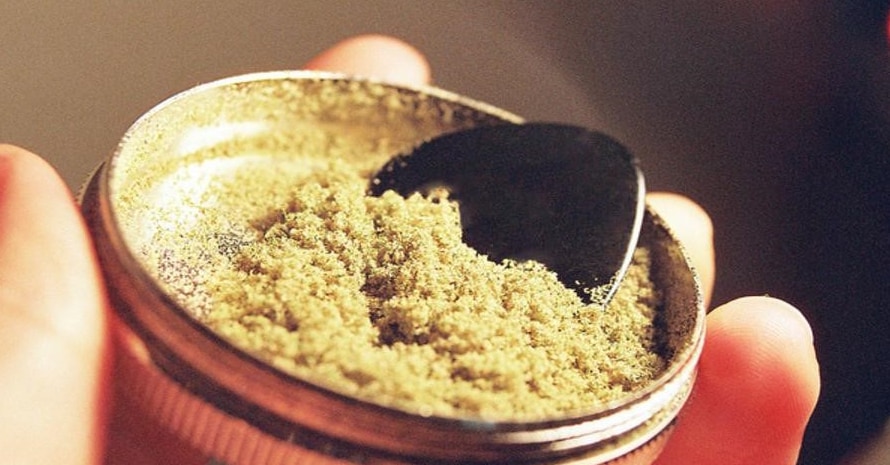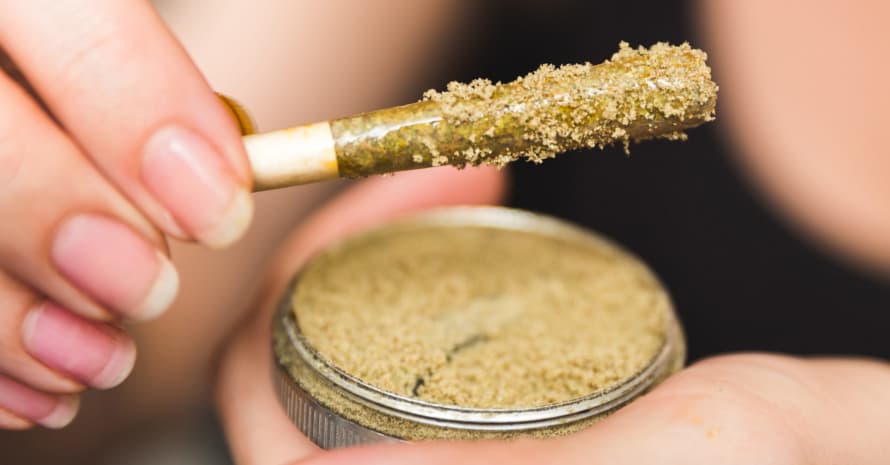
How to Press Kief into Rosin? – Getting the Most Out of Your Hash
Recently, there has been a lot of interest in rosin, as it’s considered the next big thing in concentrate consumption. For those of you who don’t know what rosin is, it’s a type of concentrate that is made through a process called “rosin-tech” – a process that uses heat and pressure to extract the oils from the plant material.
Once the oils are extracted, you’re left with a resin that is extremely flavorful and smooth, with a consistency similar to chapstick. Rosin is made by applying heat and pressure to the flower.
People have been producing rosin for a long time, but there hasn’t been much information about it. Now that rosin has become more popular, the process of making it is being improved upon.
This post is a how-to guide explaining the most cost-effective method of pressing your kief into rosin.
What You Need
Contents
The materials needed to make rosin are fairly simple, general items found in most households.
- A grinder (I prefer a 4 piece grinder, but any will work)
- Scissors or sharp knife (to cut the kief into small pieces)
- Rosin press (I use a small scale press)
- Heat-proof container (to place the rosin press in)
- Kief (this will be placed in the kief catcher)
- A scale
- Hair straightener
- Parchment paper
How to Make Rosin With Kief – A Step-by-Step Guide
Making rosin is a process that is relatively easy to do, but takes some time to get right. I have been making rosin for a couple of years now, and I have learned a lot about the process. I have made a lot of mistakes and have learned from them. This guide is written to help you avoid those mistakes.
Step 1: Decarboxylate your kief
The first thing you need to do is decarboxylate your kief. This is a fancy way of saying that you want to activate the trichomes, or resin glands, of your cannabis so that when you make your rosin, you get the full potency of your cannabis.
Decarboxylating is done by heating your kief to a specific temperature for a specific amount of time. The right temperature for decarboxylating your kief is between 220-240°F (104-116°C). You can use a digital cooking thermometer to check the temperature of your kief.
You should see a change in your kief as it decarboxylates. The color of your kief will become darker, and it will also become darker in color as you extract more trichomes. Time is also very important when decarboxylating your kief. You want to heat your kief for between 1-3 hours. The longer you heat your kief, the more activated your trichomes will be.
Step 2: Grind the kief
You need to get your kief to a very fine powder. This will make it easier to press your kief into rosin. Using a coffee grinder, grind the kief into a fine powder. Be careful not to grind the kief into dust, as it will clog your filter.
Step 3: Apply heat
Now that your weed is ground, you need to apply heat. You can use a hair straightener, a heat gun, or a butane torch. You need to apply enough heat to get the trichomes to melt.
Step 4: Press your kief
Normally, pressing the kief takes about 5-10 minutes. The longer you press, the more kief you will be able to extract. You will also notice that the color of the rosin you extract will be darker the longer you press the kief.
Step 5: Strain your rosin
You are now going to strain the butane out of the mixture. A common method of doing this is to use a coffee filter. If you are using a hair straightener, then you are going to have to stretch out a coffee filter over it, and then press the mixture through.
If you are using a heat gun, then you can either use a coffee filter or you can use a mesh strainer. If you are using an actual torch, then you will want to use a mesh strainer.
You can then store your rosin in a jar or container.
Step 6: Enjoy your rosin
You can then enjoy your rosin by dabbing it or using a vaporizer. You can also smoke it and have a nice relaxing high.
How long, How Hard, and How High
How long to press rosin?
Usually 3-5 minutes, it takes longer the more you want the rosin to be pure. More than 5 minutes of pressing will cause the plant matter to heat up and give a burnt taste.
As a general rule of thumb, you press for 5 minutes and then check the rosin for color. If it is still green, then you continue to press.
How hard to press?
When you press rosin, you need to press the resin glands (trichomes) and not the plant matter. If you press too hard you will press the plant matter along with the trichomes and this will ruin your rosin. The ideal pressure for the hash is considered to be around 500 psi. The ideal pressure when pressing kief (which is much less dense and more “fluffy”) is between 400 and 800 psi.
How high the temperature should be
Rosin tech temperature is typically within the range of 230F-250F. The best way to adjust the temperature is to press a little bit of rosin and then smell it. If it is not burned, then you need to press the rosin at a higher temperature.
FAQ
Here, I will answer some of the FAQs I have encountered so far.
How Do I Press Kief into Rosin?
- Grind your kief or bubble hash into a fine powder.
- Heat the kief at a low temperature for a short time, ideally between 300F and 350F, for 5-10 minutes.
- Press that kief into a parchment paper.
- Place it inside your press and press for a minute or two.
- Remove the rosin from the parchment paper and store it in a small container or dab-tube.
What is the difference between rosin and shatter?
The difference is in the temperature and time that they are exposed to heat. To produce Rosin, kief is heated in a hot press at lower temperatures ranging from 220F (104C) to around 300F (149C). When the kief is exposed to heat for a long time, it slowly converts the trichomes to a liquid form. Once the kief is pressed, you will have a solid substance like hash, kief, rosin, or oil.
How much kief do I need to make a batch of rosin?
It depends on the yield of your extraction. Typically, you will need 2-6g Kief/100g of rosin.
To Wrap it Up
As stated before, making rosin with kief is one of the most common ways of producing cannabis concentrates at home. This method is extremely simple and can produce a high-quality concentrate in a short amount of time.
Thank you for taking the time to read this article, I hope that it was helpful.




